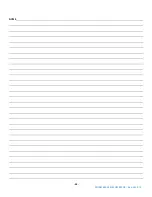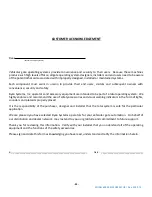
-47-
MODEL 600 SERIES OPERATOR | Rev. 2019.7.1
LOOP CONFIGURATION
The following relationship between loop area (loop width multiplied by loop length) and the number of turns
for a single loop installation should be satisfied as follows:
LOOP AREA
(Square Feet)
Number of
Turns
6-10
6
10-18
5
18-60
4
60-240
3
240 Up
2
1. The saw slots must be the proper depth (1-1/2
to 3 inches), clean, and with no sharp corners
which could damage the insulation during
installation. The greater depth should be used
in softer pavement materials to protect the
loop installation for a longer period of time.
2. The wire used in the loop should be 14 AWG
stranded with insulation rated for direct burial.
Since moisture can cause significant changes in
the dielectric constant of the insulation, which
results in excessive loop (frequency) drift.
Choose an insulation which is most impervious
to moisture. The loop must be wound with
one continuous length of wire. NO SPLICES
ARE ALLOWED.
3. Where the loop wires leave the saw cut (at the curb or pavement), they shall be tightly twisted with a
minimum of five (5) turns per foot. Use tape on the twisted portion to hold wires tightly together. This will
prevent false signals from the movement between wires.
4. Choose a sealant carefully to match the application and the pavement. Hard setting epoxies should not be
used with asphalt. Caution should be observed when using hot sealants, as high temperature can damage
or destroy wire insulation.
W A R N I N G
1. DO NOT INSTALL LOOP WITHIN 12 INCHES OF ALL
POWER CONDUITS OR CABLE
2.
STEEL REINFORCING MUST BE KEPT A MINIMUM OF
2 INCHES FROM LOOP LOCATION
X
Y
14 AWG WIRE
TWISTED LOOP
LEADS
1/2” CONDUIT
45
° SAW CUT
OVER CORNERS
3/8” SAW CUT
ENTRANCE TO CURB
LOOP DETAILS









































